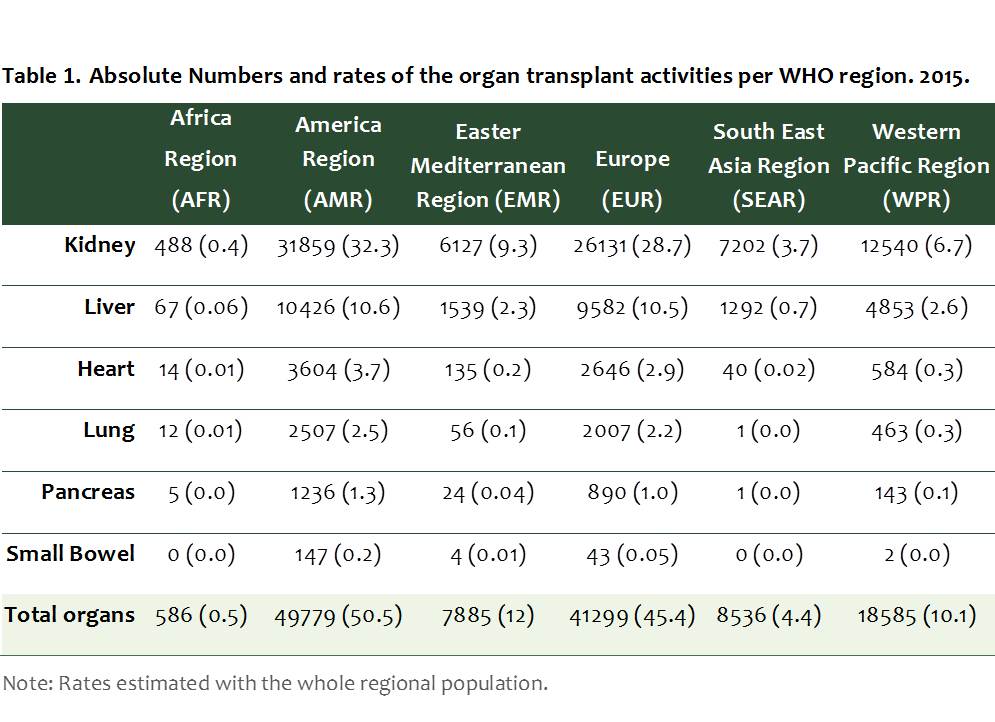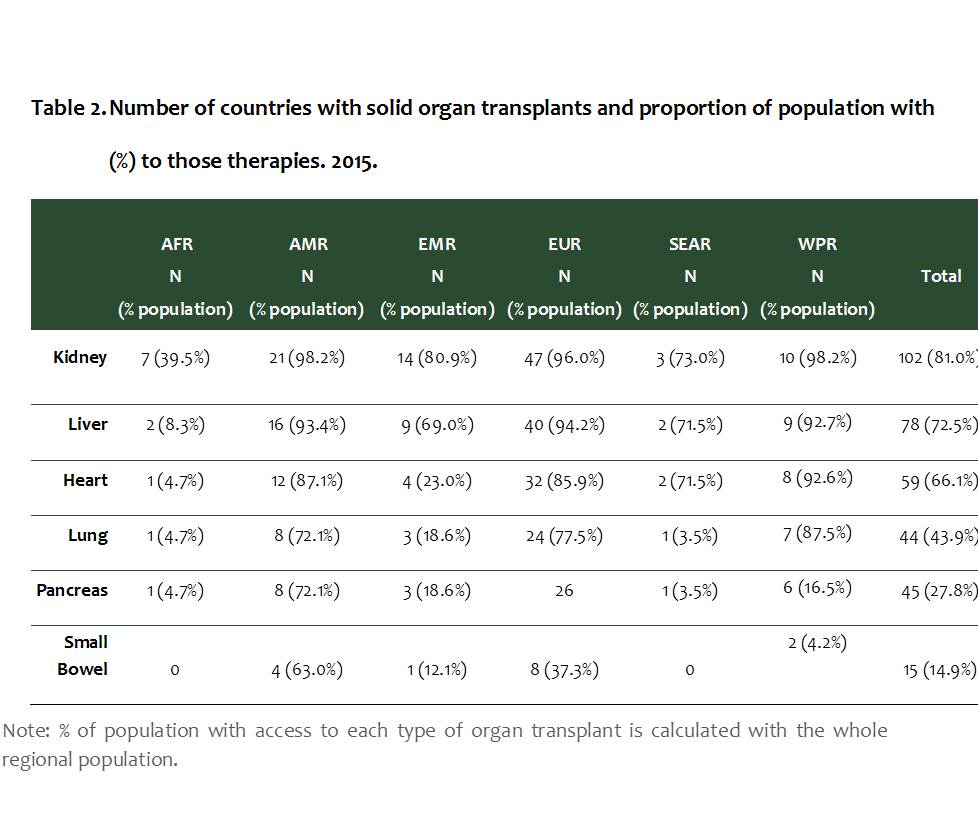Worldwide distribution of solid organ transplantation and access of population to those practices
Beatriz Mahillo1, Mar Carmona2, Marina Alvarez2, Jaime Marco2, Jose Ramon Nuñez3, Marta López-Fraga4, Rafael Matesanz5, Beatriz Domínguez-Gil6.
1Medical Department, Spanish National Transplant Organization, Madrid, Spain; 2Technical Office, Spanish National Transplant Organization, Madrid, Spain; 3Service Delivery and Safety (SDS), World Health Organization-HQ, Geneva, Switzerland; 4European Committee on Organ Transplantation (CD-P-TO), European Directorate for the Quality of Medicines & HealthCare (EDQM), Council of Europe, Strasbourg, France; 5Medical Adviser, Spanish National Transplant Organization, Madrid, Spain; 6Director, Spanish National Transplant Organization, Madrid, Spain
Introduction: The Global Observatory on Donation and Transplantation (GODT) is a collaborative effort of the World Health Organization and the Organización Nacional de Trasplantes of Spain. It is running since 2007 in response to the request of the World Health Assembly, in Resolutions WHA57.18 and 63.22, to collect global data on the practices, safety, quality, efficacy, epidemiology and ethical issues of allogeneic transplantation.This database is recognized as a tool for ensuring transparency, equity and monitoring national transplant systems.
Objective: To know the distribution of organ transplantation activities among the countries that report data to the GODT, and to assess the access to such practices around the world.
Methods: An ad hoc standard questionnaire is annually distributed to the identified health authorities and focal points contributing to the global database in each Member State (MS). The United Nations Population Fund report is used as the data source of population.
Results: Data of 111 MS have been analysed to describe the organ transplant activities in 2015(82.2% of the global population).
126,670 solid organs transplants were reported: 84,347 kidney (41.8% from living donors), 27,759 liver (21.0% from living donors), 7,023 heart, 5,046 lung, 2,299 pancreas and 196 small bowel transplants. Table 1 shows the absolute numbers and organ transplant rates (pmp) in the six WHO regions by applying the total regional population as the denominator.
Kidney transplants were performed in 102 countries. Living kidney transplants were carried out in 98 and transplants from deceased donors in 76 countries. There were 16 countries performing only kidney living transplants (6.6% of the global population).
78 countries performed liver transplants during 2015. Liver transplants from living donors were carried out in 59 countries and from deceased donors in 66. There were 12 countries with living liver transplants alone and 19 countries performing only liver transplants from deceased.
Heart and lung transplants were reported in 59 and 44 countries respectively. Of the total of lung transplants, 93.7% were from deceased donors. Only Japan, Brazil and Germany reported to perform lung transplants from living donors in 2015.
Regarding pancreas transplants, they were carried out in 45 countries while only 15 countries reported small bowel transplants. Table 2 summarizes the distribution of population covered by the different types of organ transplants.
Conclusion: The human right to healthcare includes access to transplant therapy when needed. The international variation in solid organ transplantation activity reflects global inequities in access to transplantation but also highlights the potential of different organ donation and transplantation programmes to produce better outcomes.
Following the Madrid Resolution requirements, “self-sufficiency” in organ donation and transplantation continues being a common global challenge.
